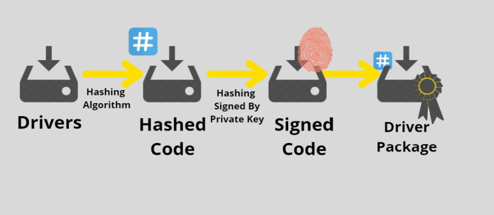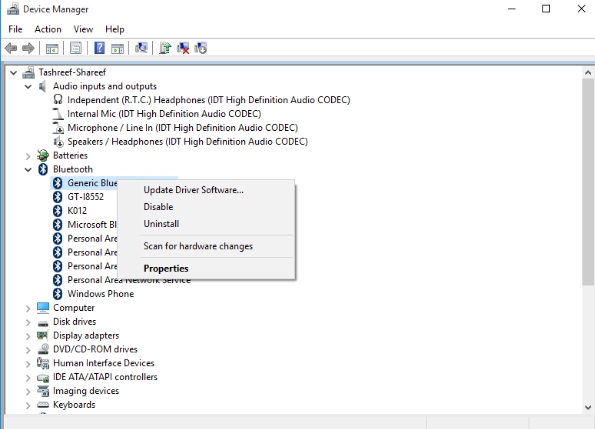Cybersecurity is synonymous with all things computers! So, securing software for your customers becomes vital to avoid exposure to cyber-attacks. However, you may argue that your users can simply download the software drivers from official websites with secure communication channels backed by SSL certificates.
Though this is not the ideal case with the internet crowded by fake software copes with malware injected to expose the user’s device. Moreover, according to a survey, 37% of software downloaded by users are unlicensed, making it a breeding ground for fake copies, which may not be secure.
This is where the code signing certificate comes to your help with extensive security for your software drivers. It allows you to keep the integrity of your software code intact and avoid exposure of users’ devices to malicious drivers.
However, you will have specific questions about using such a solution like,
- How does a code signing certificate help secure Windows drivers?
- How does it work?
- What is the process for code signing of the driver?
Well, fret not! All the answers you need are here!
Let’s first begin with what is a Windows driver.
What is a Windows driver?
In their most basic form, Windows drivers are a software component that helps in communication between the operating system and a device. Take an example of music player software. When you connect a Bluetooth device to the computer, it needs a driver to communicate with the operating system.
Further, you need to have a Windows driver to communicate the music player software with the operating system. There is also a handshake code required to communicate between the music player and Bluetooth device that needs drivers.
Now, if you are to release a driver package for Windows software, digital signatures are not just a security measure but also a pre-requisite, according to Microsoft. Before publishing the driver packages, any software publisher or app developer must submit Windows Hardware Lab Kit (Windows HLK) test logs.
For each Windows 10 version, you need to download the HLK and run a cert pass test. You will have different log files for each version which you need to club together and submit to Windows Hardware Developer Center Dashboard portal.
After proper vetting by Microsoft under the Windows Hardware Compatibility Program Specifications and Policies, it is certified for public release. Especially Windows driver designed for OS version 1607 of Windows 10, EV code signing certificate is mandatory for a dashboard account.
The next question in your mind will be, “What is an EV code signing certificate?”
An EV code signing certificate or Extended Validation code signing is different from the standard code signing process. It involves storing the security keys outside the developer’s workstation or secure external storage. The vetting process for the Extended Validation Certificate needs to be according to the CA/Browser forum guidelines.
Now that we know what Windows drivers are and the minimum requirements for verified releases on the operating system, let’s discuss how it works.
How does a Code Signing certificate work?
In an ocean of fake software copies and spammy websites, a code signing certificate signifies trust. A certificateauthority or CA issues a signed certificate only after a thorough vetting process that involves verifying the software author’s identity.
It works as a sign of trust and a shield of protection. If your software code gets compromised, the signing authority will inform the user of the breach and secure their devices. Further, hashing the software code during the digital signing process helps ensure that the file users download the same that the author released.
Hashing involves creating an array of string values for the software code, which is further matched with a hash code at the user’s device. If it fits, users can install the software without worrying about data breaches or code integrity issues.
However, if the hash does not match, users are warned by the system to avoid installing software. So, there is no denying the fact that with a code signing certificate, you can combat the fake copies of your software drivers and ensure that the user’s trust is, by and large, stays intact.
Until now, we have discussed what a Windows driver is and how an EV code signing certificate is mandatory for the specific OS and helps with protection. So, let’s understand how to code sign your software driver.
What is the process for code signing of the driver?
The code signing process for your Windows driver begins with issuing a certificate from a trusted CA. Further, you need to follow the CA’s instructions and install the certificate on your computer.
However, the code signing process involves installing several intermediate certificates to create a chain of trust that leads back to the root certificate. First, you will need cross-certificates. To use a cross-certificate you will have to include an argument form
/ac “path-to-your-cross-cert.ct”
Furthermore, you need to install intermediate certificates, timestamp the digital signature and use a digest algorithm for hashing function. Timestamping helps determine the time of the code signing process for driver packages. Finally, once you have code signed the driver package, you need to test them before releasing it to the users.
Conclusion
Code signing your driver packages is essential to keep the software secure and ensure that the user’s interest does not fade. Especially if you are to release enterprise software, the integrity of the driver code becomes critical to your business operations.
The best part about a code signing certificate is that it ensures the security of your software driver and keeps the integrity of the code intact. So, start code signing your drivers and never let your users be exposed to a malicious fake copy.





